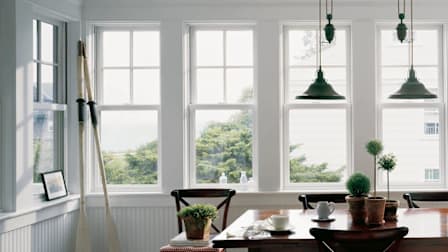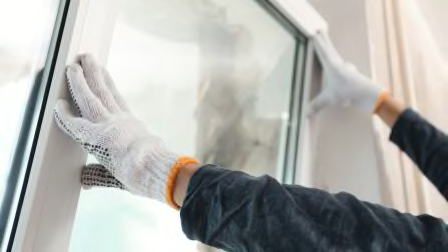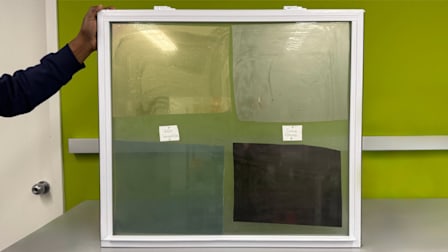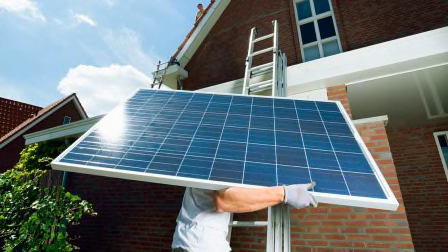How to Make Sense of a Window Label
CR decodes the NFRC's energy-efficiency label that you'll see on most replacement windows
On every new window there’s a label with an inscrutable bunch of numbers. Why is that label there? And what do those numbers mean?
The window label is an energy-efficiency label, created by the the National Fenestration Rating Council (NFRC), an industry group. Unlike the bright yellow EnergyGuide labels you’ll find on home appliances like refrigerators and dryers, these labels don’t estimate how much money you’ll spend annually on energy when your windows are in place. They also don’t indicate whether a window meets Environmental Protection Agency (EPA) standards as an Energy Star product. Find out what qualifies a window to be Energy Star certified, below.
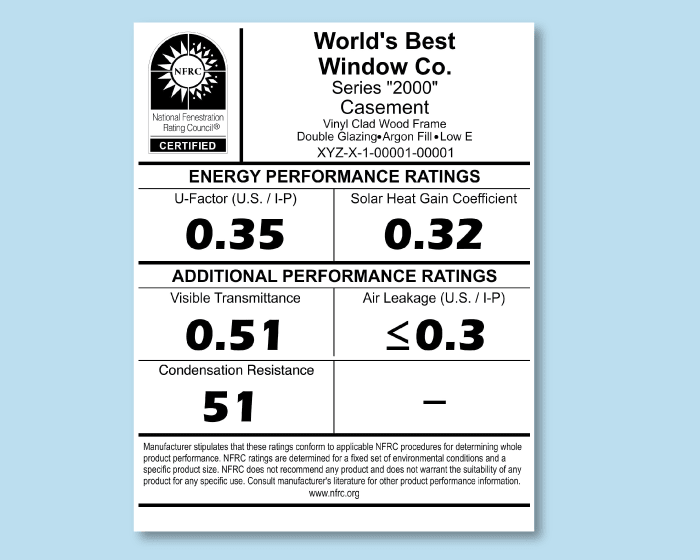
The NFRC's energy-efficiency window label
Glass Type and Product Information
You’ll find the frame type, along with any coatings on the glass (this window has a low-E, or low-emissivity, coating) and the type of gas that fills the cavity between glass panes (in this case, argon), which contributes to the product’s overall energy efficiency.
U-Factor
This number represents the heat transfer coefficient, or how much heat the window’s coatings help keep inside the home. The U-factor ranges from 0.1 to 1.2; the lower the number, the less heat escapes.
Solar Heat Gain Coefficient
This number measures how well a product keeps heat from the sun from penetrating the window. The range is 0 to 1. If you live in a hot, sunny climate, such as Arizona’s, you will want a low number to block out heat; if you live in a colder climate, you’ll want a high number to take advantage of whatever solar heat is available. If you live in a balanced climate, where winters are cold and summers are hot, you’ll want a solar heat gain coefficient rating of around 0.3 (the same goes for the U-factor). And you may want windows with different ratings for different parts of your house, depending on the direction the window faces and whether it gets a lot of sun or shade.
Air Leakage
This is how much outside air will come through the window frame, according to the NFRC’s testing. The lower the number, the better. (The range here is less than or equal to 0.1 to 0.3.) In our tests, we take this a step further by testing windows at very low temperatures with high wind conditions to see if there are any changes in performance due to materials expanding and contracting.
Condensation Resistance
Not every label will carry this optional rating. But if you live in a humid climate and/or are concerned with mold growth, you may want to look at the condensation resistance rating, which is on a scale from 1 to 100. The higher the number, the better the window is at resisting condensation.
Visible Transmittance
This is how much visible light will come in through the window during the daytime. The range is 0 to 1, and the higher the number, the more visible light passes through. Clear glass without any coatings has the highest VT rating. But coatings that you may add to improve energy efficiency can sacrifice some visible light.
What Qualifies a Window to Be Energy Star Certified?
Replacing existing windows with more efficient Energy Star windows can save Americans 13 percent, on average, on their home energy bills, says Energy Star, a program of the Environmental Protection Administration. The NFRC label won’t tell you whether your window is Energy Star. You’ll have to look for a separate Energy Star label.
What that label won’t tell you is whether your window meets new, stricter standards, called Energy Star 7, that went into effect on October 23, 2023, says Michael O’Brien, CEO of the Window and Door Manufacturers Association, based in Washington, D.C.
To find out, you can check out the Energy Star product finder for windows, doors, and skylights. But you’ll need to determine first which climate zone you live in, since Energy Star windows for one climate zone may not be Energy Star for another. Alternatively, you can note the window model’s U-Factor and SHGC on its NFRC label, and check the table below to see if your window qualifies as an Energy Star 7 window.
New Energy Star 7 Requirements for Windows
| Climate Zone | U-Factor | SHGC |
| Northern | ≤ 0.22 | ≥ 0.17 |
| North-Central | ≤ 0.25 | ≤ 0.40 |
| South-Central | ≤ 0.28 | ≤ 0.23 |
| Southern | ≤ 0.32 | ≤ 0.23 |
Which Windows Qualify for a Tax Break?
Keep in mind, though, that while installing an Energy Star certified window will help you save on energy, it doesn’t automatically offer other financial benefits.
Until this year, installing any Energy Star window automatically qualified the buyer for one-time federal tax credit of up to $500. As of this year, that’s no longer so. There’s still a federal tax credit—and in fact, under the Inflation Reduction Act of 2022, it’s now 30 percent of a new window’s cost, up to $600, and can be used each year through 2032, not just one time. (Homeowners actually can claim a total $1,200 for any combination of "home envelope improvements," including windows, doors, skylights, insulation, and electrical upgrades related to other energy-saving improvements such as furnaces and boiler upgrades.)
But under the new law, only select windows and skylights that are considered Energy Star Most Efficient qualify for that tax break.
"It’s a much smaller number of products that comply," O’Brien says. "These are the most expensive products on this list. It’s greatly limiting the effect and the goals of the tax credit."





























